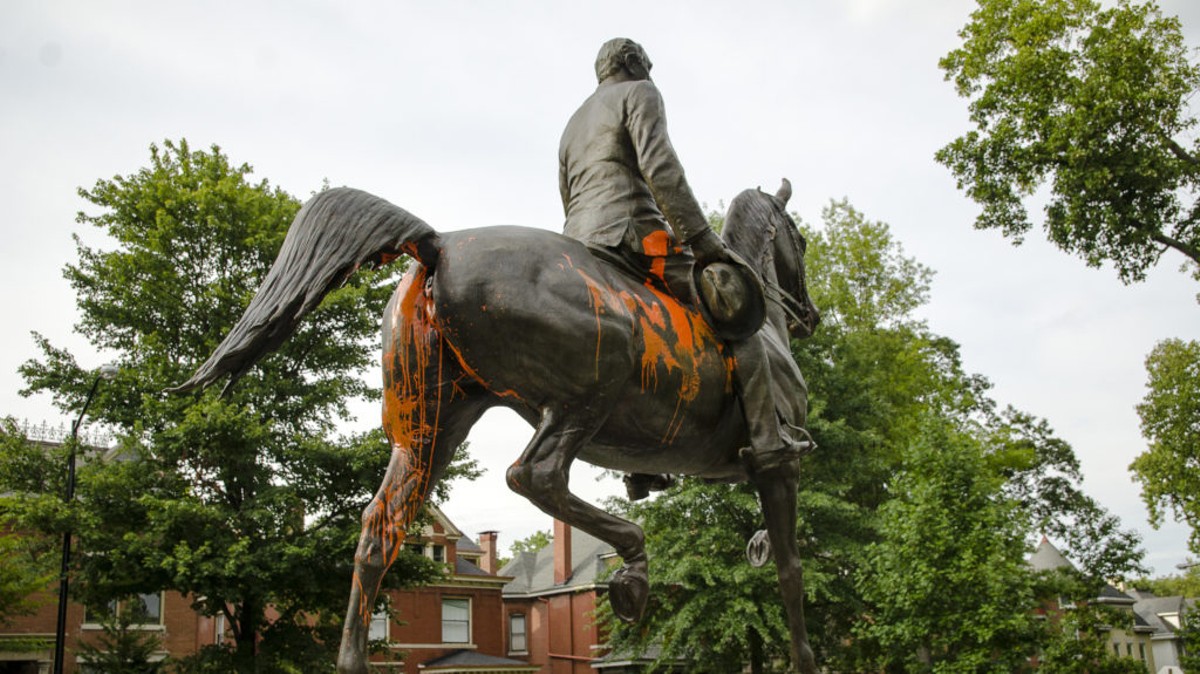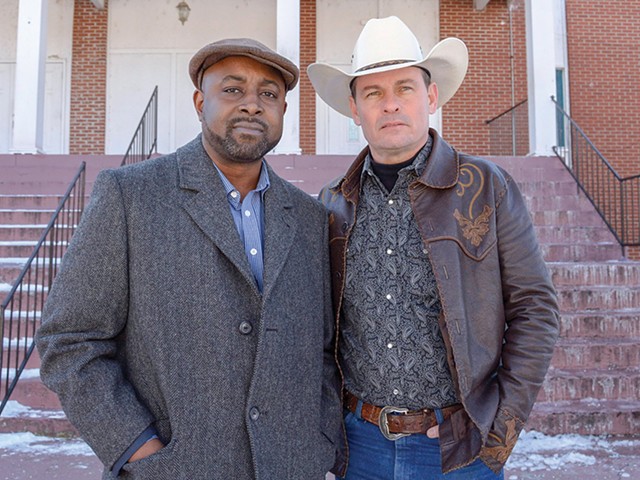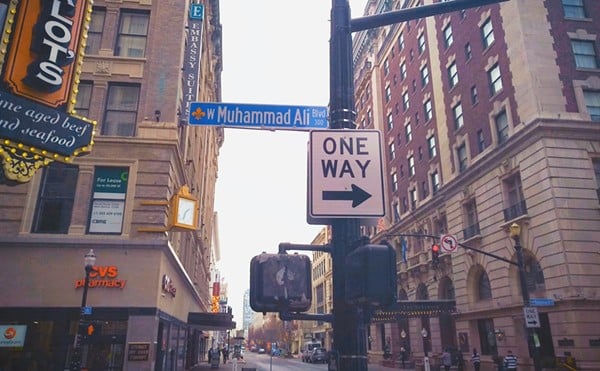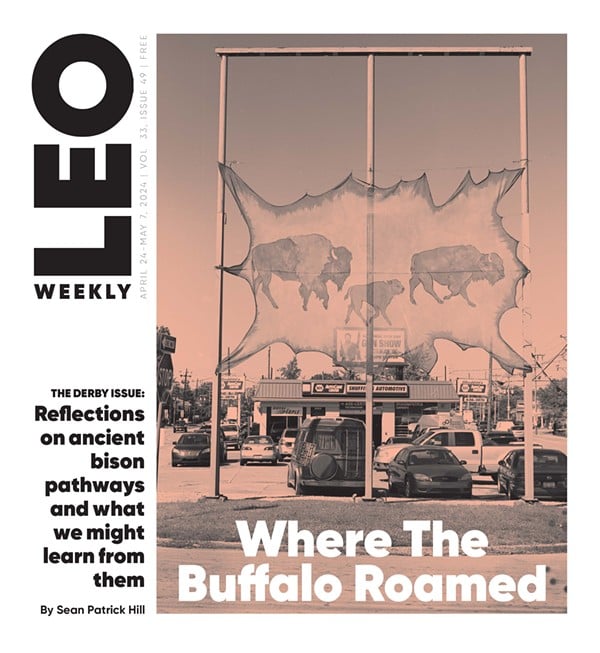The John B. Castleman statue is staying for now in Cherokee Triangle after a vote last week from a neighborhood architectural review committee. But the city is appealing that decision to remove the statue, which the mayor had originally vowed would be gone by the end of 2018.
After the city files its appeal, the issue goes before another board, the Historic Landmarks and Preservation Districts Commission. That board consists of city employees and residents appointed by the mayor, an arrangement that seems to have potential for a conflict of interest.
“How neutral can that person be?”asked one resident who declined to give her name at last week’s meeting.
But Steve Porter, an attorney specializing in preservation law, believes that the commission’s 12 members are “a good group of people” with “good backgrounds.” They include two city employees and 10 residents recruited for their areas of expertise, among them two architects and a real estate broker.
“It won’t be a stacked deck at all,” he said.
When asked if the potential for a conflict of interest existed, a Mayor’s Office spokesperson said, “No. Most all local boards and commissions, including the Cherokee [Triangle Architecture Review Committee], are largely appointed by the mayor and approved by the Metro Council.”
Landmarks Commission members may be freethinkers, but that brings its own problem. Porter and Charles Cash, an architect who served on the commission for 15 years, said that the city’s design guidelines for determining Castleman’s fate are vague, leaving room for varying opinions on a uniquely complicated issue.
“I can’t remember anything that quite rises to this level of ambiguity, I guess, is the word,” Cash said.
So, it’s not clear yet which way a vote could go.
Cash said that members interpret the guidelines on their own but with the help of city input and citizen testimony.
City design guidelines for preservation districts say that historic circulation patterns, gateways, entrances and artwork should be retained whenever they are character-defining features.
In August, Mayor Greg Fischer called for the Castleman statue’s removal, saying, “Louisville must not maintain statues that serve as validating symbols for racist or bigoted ideology.”
The city concluded that the statue could be removed under the design guidelines because it is not original to its roundabout home, and because removal of the statue would not change the traffic function that the roundabout serves, according to a staff report.
In essence, the city argued that the statue is not an important part of the roundabout or the neighborhood.
Some members of the Cherokee Triangle review committee disagreed. Michael Gross, chair of the review committee, said that, in conflict with the city, he felt the Castleman statue was integral to the roundabout and the neighborhood.
“Throughout the guidelines, the Castleman statue is, in essence, the neighborhood,” he said. “I mean, it’s the Cherokee Triangle. It’s on the emblem on our buildings, the historical markers. It’s on the cover of the book.”
It was a sentiment repeated by many Cherokee Triangle neighbors at last week’s meeting. “I speak for the majority of the silent in our community in the Cherokee Triangle that we like that statue,” said Lynn Horrar. “It’s a piece of artwork. That’s how we view it. It represents our Triangle.”
Cash said he sees “both sides” of the Castleman issue, but pointed out that the statue serves an urban design purpose as a “terminating vista,” which means that it serves as an aesthetically pleasing flourish at the end of the street.
Landmarks members also will consult the Cherokee Triangle designation report when making their vote, a document describing the historic importance of the district, said Porter. In that report, the Castleman statue is not identified as a contributing element to the district, according to the city.
It is rare for the city to appeal an architectural review committee’s decision — usually because home and commercial building owners are the ones who need the committees’ approval. Porter can’t remember a time when it’s happened.
Unlike the Cherokee Triangle review board, members of the Landmarks Commission have a degree of separation from the neighborhood. Two of the Cherokee Triangle committee members are on the commission, but they won’t be allowed to vote if the Castleman decision is appealed. Tamika Jackson voted for removal, while Christopher Fuller voted against.
There’s a potential for a tie, too. Because of a County Attorney decision last year, there is no council member on the Landmarks Commission, leaving the board with an even number of voting members. If a tie happens, the city’s appeal would fail again, but that might not be the end of it.
The city — any party, actually — can appeal the Commission’s decision to the Jefferson County Circuit Court.
Hidden within the argument of whether the statue is essential to the neighborhood is whether John B. Castleman evolved from his Confederate values — the main reason the city wants his removal. It is a factor that Landmarks members should consider, Porter said.
“I think, you know, the whole question here is whether the city and the Landmarks Commission are able to say that Gen. Castleman was changed enough after the Civil War in order to honor him,” said Porter. “The fact that he became a brigadier general in the United States Army after the war, the fact that he was involved in the Louisville park system, etc. Is that enough to say that what he did as a 19-year-old is now forgiven? But then you throw in that final, old little clinker that when he died, that he asked for the Confederate flag and the U.S. flag to be put on his casket. And does that tell you, well, he never really did reconcile? That’s what makes this thing tough.”
Meanwhile, the statue has been vandalized several times (repaired once for $8,200), and it is unclear where it would be moved.






